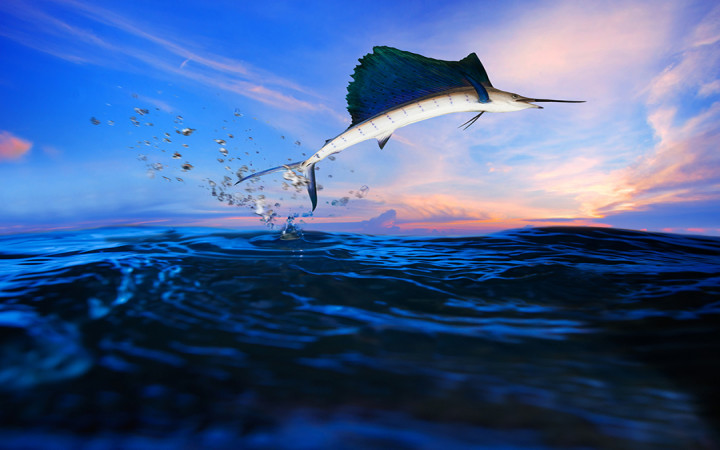Today’s Wonder of the Day was inspired by Carin. Carin Wonders, “What is the swordfish's sword made of?” Thanks for WONDERing with us, Carin!
Do you ever wish you lived long ago? Sure, the Internet and video games are fun. And electricity comes in handy quite often. But wouldn't it have been cool to be alive during the time the pirates sailed the high seas?
You could have explored the world's oceans, discovering new lands. Life aboard a pirate ship would have been so exciting. Of course, you would've had to worry about diseases, like malaria and scurvy.
There's also a chance you could've lost an eye or a limb in a swordfight. After all, there's a reason eye patches and peg legs are a part of many modern pirate costumes.
Today, the closest you might get to such adventure is sailing the world's oceans to fish for or study a popular fish that packs a powerful weapon. What are we talking about? The swordfish!
Known scientifically as Xiphias gladius, the swordfish is the only species in the scientific family Xiphiidae. Prized as a game fish and loved worldwide for its delicious meat, the swordfish can be found in oceans all over the world.
An adult swordfish differs from many other species in that it doesn't have scales or teeth. It does have a long, cylindrical body and a tall dorsal fin. Adults can grow to be as long as 15 feet and weigh over 1,100 pounds.
Swordfish are best known for the unmistakable swords that extend from their snouts. Unlike similar species with rounded bills, the sword of a swordfish is a flat, oval shape. Its unique shape lends it its other popular nickname: broadbill.
Swordfish don't tend to spear prey with their swords. Instead, they use them to slash at prey to stun or slice them in half, which they then swallow whole or in large pieces since they lack teeth. Swordfish are skilled predators with keen eyes that tend to feed on squid, fish, and crustaceans.
Swordfish are fast swimmers that migrate to cool waters in the summer and warm waters in the winters. They have a wide range and can commonly be observed in surface waters, although they usually stay at depths between 650-1,970 feet.
Water temperatures vary greatly across these great depths, and swordfish can tolerate a wide variety of water temperatures. Scientists have learned that they possess a "brain heater" in the form of a large bundle of tissue associated with the eye muscles. This tissue insulates and warms the brain, allowing them to withstand deep dives in colder waters.
The "brain heater" also keeps a special oil gland warm. The gland sits at the base of the sword between the eyes. It secretes oil that flows out of pores in the sword, lubricating the skin and repelling water to help the swordfish swim at high speeds.




